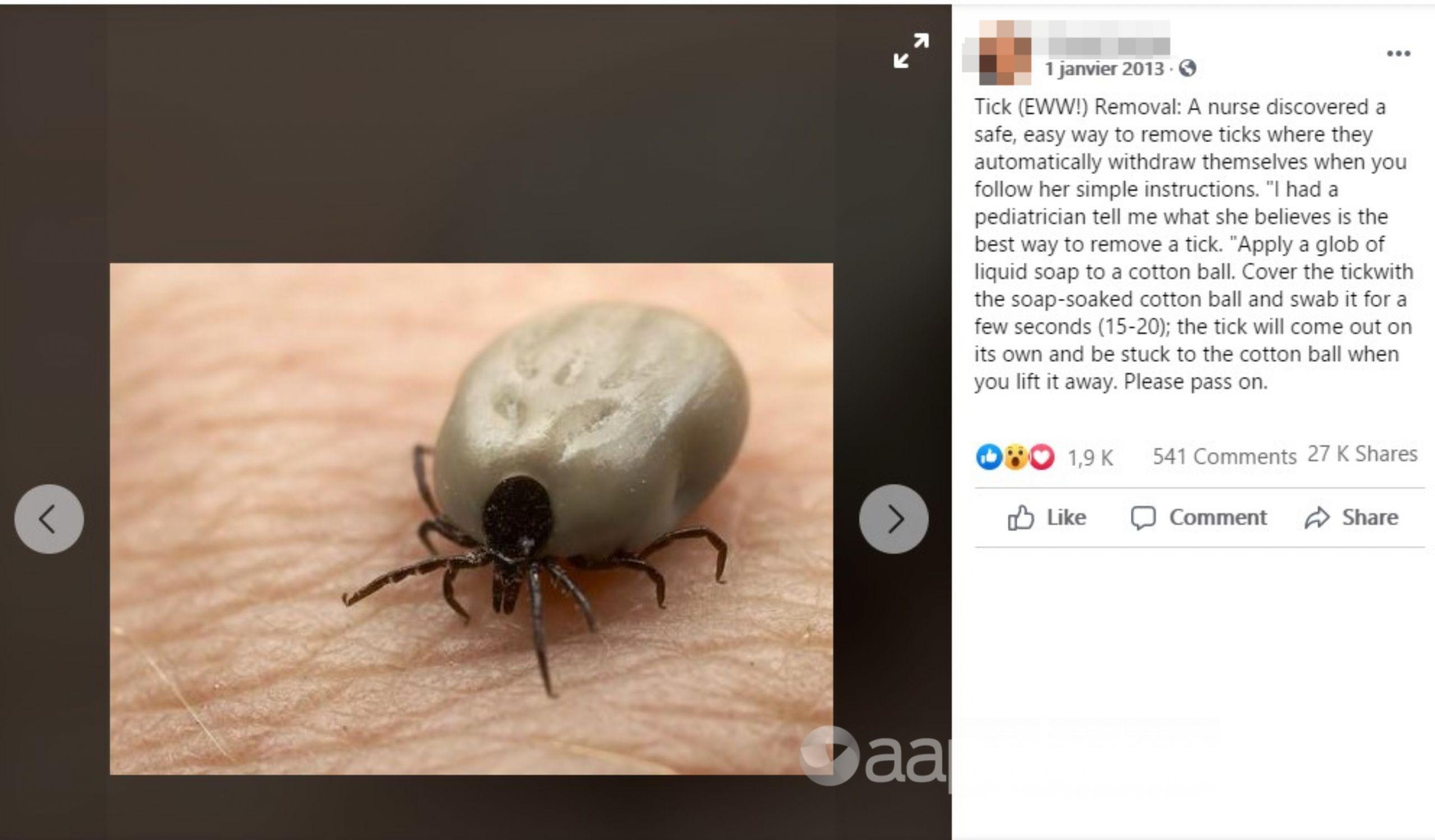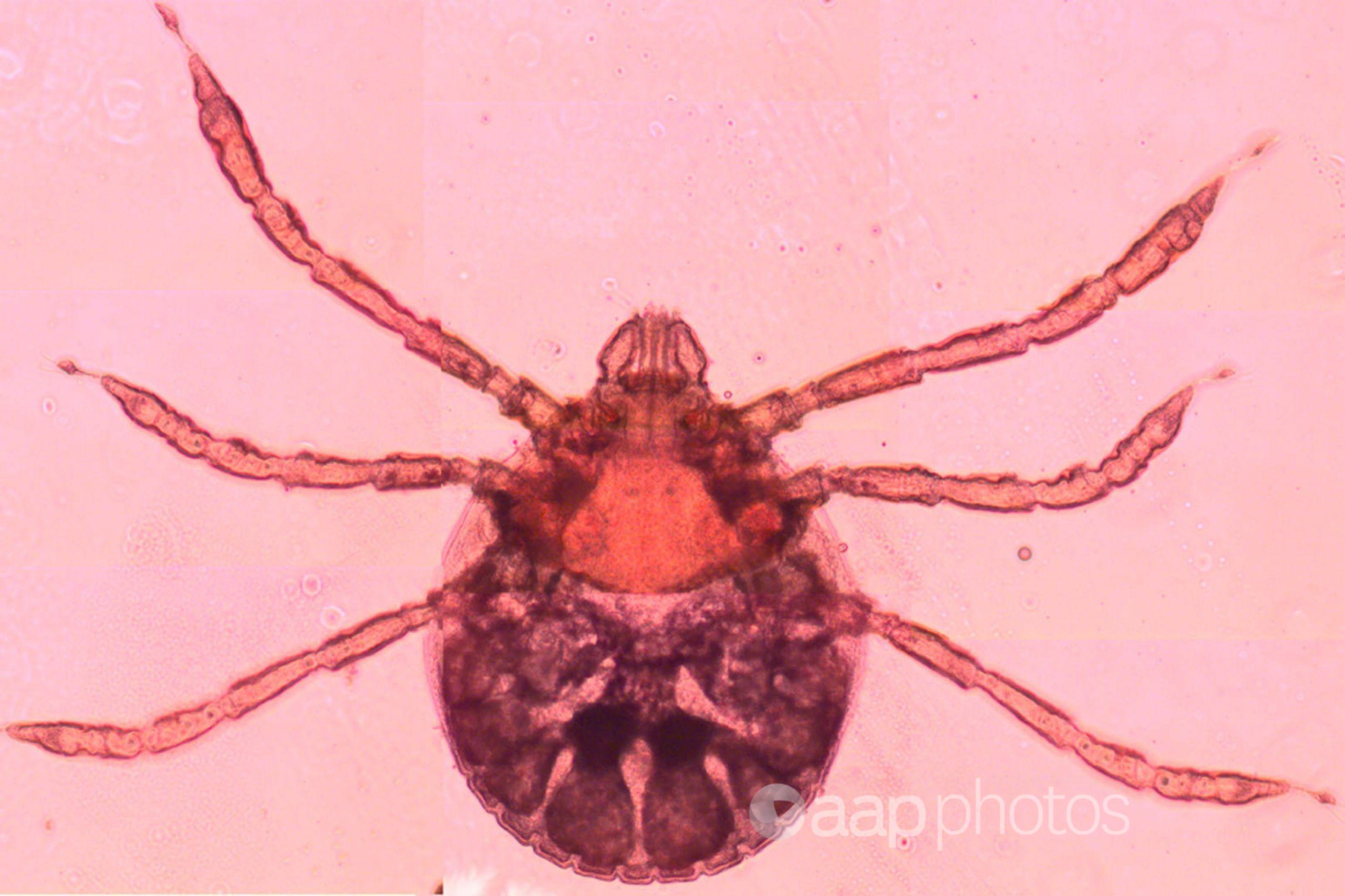The Statement
A Facebook post claims that “a nurse discovered a safe, easy way to remove ticks”, adding that the parasites will “automatically withdraw themselves” when you follow her simple instructions.
“Apply a glob of liquid soap to a cotton ball. Cover the tick with the soap-soaked cotton ball and swab it for a few seconds (15-20); the tick will come out on its own and be stuck to the cotton ball when you lift it away,” the post reads.
One version of the post, from 2013, continues to circulate on Facebook and has been shared by users in New Zealand among other countries. It had amassed more than 27,000 shares at the time of writing, while more recent versions of the same advice have also attracted hundreds of shares (see example here).

The Analysis
Despite being shared widely for years, the Facebook post’s easy tick remedy doesn’t hold up to inspection. Experts told AAP FactCheck that the recommended way to remove the parasite is either by freezing, or using tweezers, forceps or a tick remover.
Ticks are spider-like parasitic arachnids that attach themselves to other animals – including humans – to feed on their blood. They use a “mouthful of hooks” to attach themselves deeply to the skin to ingest blood. In the process, they can transmit bacteria, viruses, and other ailments through their saliva.
The serious tick-borne infection, Lyme disease, while common in other countries, is not believed to be present in Australia or New Zealand.
There are about 70 species of ticks in Australia and more than 800 around the world. However, the “soapy cotton ball” remedy in the Facebook post isn’t recommended as a way to remove them.
“It is not a safe way to remove ticks,” Professor Stephen Doggett, director of the Department of Medical Entomology, NSW Health Pathology at Westmead Hospital in Sydney, told AAP FactCheck via email.
For the Australian paralysis tick (Ixodes holocyclus) found on the east coast, Prof Doggett recommended they be killed in place by “freezing with an ether-based spray or dabbed with a permethrin-based scabies cream”.
Australia has the highest prevalence of tick-related allergies in world, according to Dr Sheryl van Nunen, an immunologist and clinical associate professor at Sydney Medical School University of Sydney in a video for Tick Induced Allergies Research and Awareness (TIARA).
Both Prof Doggett and Dr van Nunen appeared on Channel 7’s Morning Show earlier this month to discuss tick safety in Australia. For tick removal, Dr van Nunen advised: “Don’t disturb the tick. Don’t scratch anything you can’t see because it could be a tick. Freeze it, leave it to drop off, because removing it is quite difficult.”
Dr van Nunen said another removal option is to use fine-tipped forceps.
In a statement to AAP FactCheck, the New Zealand Ministry of Health recommended using tweezers or tick removers.
“Advice provided to the Ministry of Health is that ticks are safely removed by using fine tweezers or tick removers (tick removers can be purchased in pharmacies or online stores),” the statement said.
“The advice says ticks must be grabbed with the tweezers close to the skin, and pulled out at the angle the tick is attached. This helps to limit the risk of breaking the tick’s mouthparts. A secondary infection can occur if the mouthparts get stuck in the skin.”
“The skin needs to be disinfected once the tick has been removed,” the statement added.
The Australian Department of Health and the US Centers for Disease Control and Prevention (CDC) recommend the use of fine-tipped tweezers.
Australian health officials also advise against using “folklore remedies such as matches or pins because they will irritate the tick and make it harder to completely remove”, while the CDC provides similar advice to avoid purported methods such as “‘painting’ the tick with nail polish or petroleum jelly, or using heat to make the tick detach from the skin”.
Similar claims about tick removal to those included in the post have been previously debunked (here, here and here).

The Verdict
Experts told AAP FactCheck the post’s advice was not a safe removal method for ticks. They recommended either freezing ticks or removing them with fine-tipped tweezers or forceps.
False – Content that has no basis in fact.
AAP FactCheck is an accredited member of the International Fact-Checking Network. If you would like to support our independent, fact-based journalism, you can make a contribution to AAP here.
All information, text and images included on the AAP Websites is for personal use only and may not be re-written, copied, re-sold or re-distributed, framed, linked, shared onto social media or otherwise used whether for compensation of any kind or not, unless you have the prior written permission of AAP. For more information, please refer to our standard terms and conditions.

















